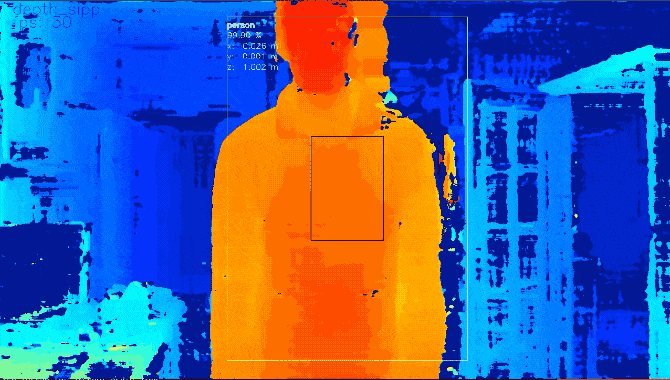A special series exploring two decades of American life under the Department of Homeland Security.

The Verge’s “Homeland” project is a series of stories about surveillance, immigration, and technology that attempt to unmask the policies that have shaped the US in the 20 years since. For the next three months, we will be publishing investigative features, interviews, and profiles that will capture the breadth of DHS’s influence and power — and how that sprawl has diffused accountability and allowed the agency to operate in total opacity. . .
The great challenge of conceiving “Homeland” has not been identifying the myriad overreaches and abuses by the DHS but trying to understand the long trail of incentives and violations it has caused. Often, the reasons were unintentional. But repeatedly, the reporting comes to the same conclusion: that the Department of Homeland Security has been a 20-year boondoggle.
— Sarah Jeong and Kevin Nguyen, Editors
"When George W. Bush outlined his national strategy for homeland security, the pitch was simple: America was under attack by a “terrorist threat,” and the country needed to protect itself from an enemy that “takes many forms, has many places to hide, and is often invisible.”
It was in direct response to the 9/11 attack, and yet, the specifics of that terrorist threat were surprisingly vague. The imprecision could be read as paranoia. Or, more insidiously, you could see it as a way to broaden the definition of enemy to include any and all foreigners. Suddenly, immigrants were a threat to the “homeland.” And anyone else who would voice a dissenting opinion was a danger to national security. Rereading the strategic initiatives that underpin the Department of Homeland Security’s founding today, an irony in its logic becomes clear: the threat is there, and also, the threat is here.
And so, the Department of Homeland Security (DHS) was swiftly established as a new umbrella agency to oversee nearly two dozen existing ones. Domestically, the government’s great response to 9/11 would come to resemble a dramatic corporate reshuffling to keep Americans safe by updating an org chart. Whereas the US enforces its power abroad through military and economic strength, it enacts violence on its people domestically through a much more surreptitious form: bureaucracy. . .
Just as 9/11 gave the US government cover to start two wars abroad, it became the justification to permanently undermine the civil rights of its people — an undermining of civil freedoms disguised as a big knee-jerk reaction. . ."
CONTINUE >> https://www.theverge.com/c/23055922/homeland-security-series
| 6.29.22 | The Afghan refugee crisis collides with California’s housing disaster |
Nobody enjoys waiting in the airport security line. But you can make that wait a little bit shorter — and also keep your shoes on — if you pay for a program rolled out by the TSA called “PreCheck.” In a post-9/11 world, this is the great innovation of the department.
At least according to Dan McCoy. This is a guy who should know innovation, as the TSA’s chief innovation officer. In my interview with him, he called PreCheck ---- “a hallmark government innovation program.”
But what do programs like PreCheck and the larger surveillance apparatus that theoretically keep us safe mean for the choices we make? What do we give up to get into the shorter security line, and how comfortable should we be with that?
BLOGGER NOTE: Dan McCoy also mentions "Clear"... here's what that is ICE Signs $274,000 Contract With Clearview
Shitbirds Of A Feather Flock Together:
from the voted-Most-Hateable-for-two-years-running! dept
"ICE continues to not care what anyone thinks of it. Its tactics over the past few years have turned it into one of the federal government's most infamous monsters, thanks to its separation of families, caging of children, unfettered surveillance of undocumented immigrants, its fake university sting created to punish students trying to remain in the country legally, its sudden rescinding of COVID-related distance learning guidelines solely for the purpose of punishing students trying to remain in the country legally… well, you get the picture.
Perhaps it's fitting ICE is buying tech from a company that appears unconcerned that most of the public hates it. Clearview -- the facial recognition software that matches uploaded facial images with billions of images scraped from the open web -- is one of the latest additions to ICE's surveillance tech arsenal.
Immigration and Customs Enforcement (ICE) signed a contract with facial recognition company Clearview AI this week for “mission support,” government contracting records show (as first spotted by the tech accountability nonprofit Tech Inquiry). The purchase order for $224,000 describes “clearview licenses” and lists “ICE mission support dallas” as the contracting office. . .
Either way, we can safely conclude both partners here suck. ICE is bad and keeps getting worse, and Clearview isn't ever going to improve and is presumably still scraping sites for "content" it can sell to its customers.
Companies: clearview, clearview ai
26 June 2021
Clearview In View (One More Time Again!) on Techdirt Over "Scraping"
Clearview Forbids Users From Scraping Its Database Of Images It Scraped From Thousands Of Websites
from the don't-scrape-me-bro dept
The use of automated systems or software to extract the whole or any part of the Service or Website, the Information or data on or within the Service or the Website, including image search results or source code, for any purposes (including uses commonly known as “scraping”) is strictly prohibited.
Pretty sure a bunch of the sites scraped by Clearview have similar clauses in their terms of use. And if Clearview doesn't believe those terms should be honored, it shouldn't expect others to give it the respect it refuses to extend to others. I don't think anyone else should necessarily be in possession of everything in Clearview's facial recognition database but I do think someone needs to scrape the shit out of it on sheer principle. . ."
/cdn.vox-cdn.com/uploads/chorus_asset/file/23632708/mleshnov_220203_4969_0017.jpeg)
/cdn.vox-cdn.com/uploads/chorus_asset/file/23632776/VRG_Illo_5200_Homeland_Wolf_Lede.jpg)








No comments:
Post a Comment